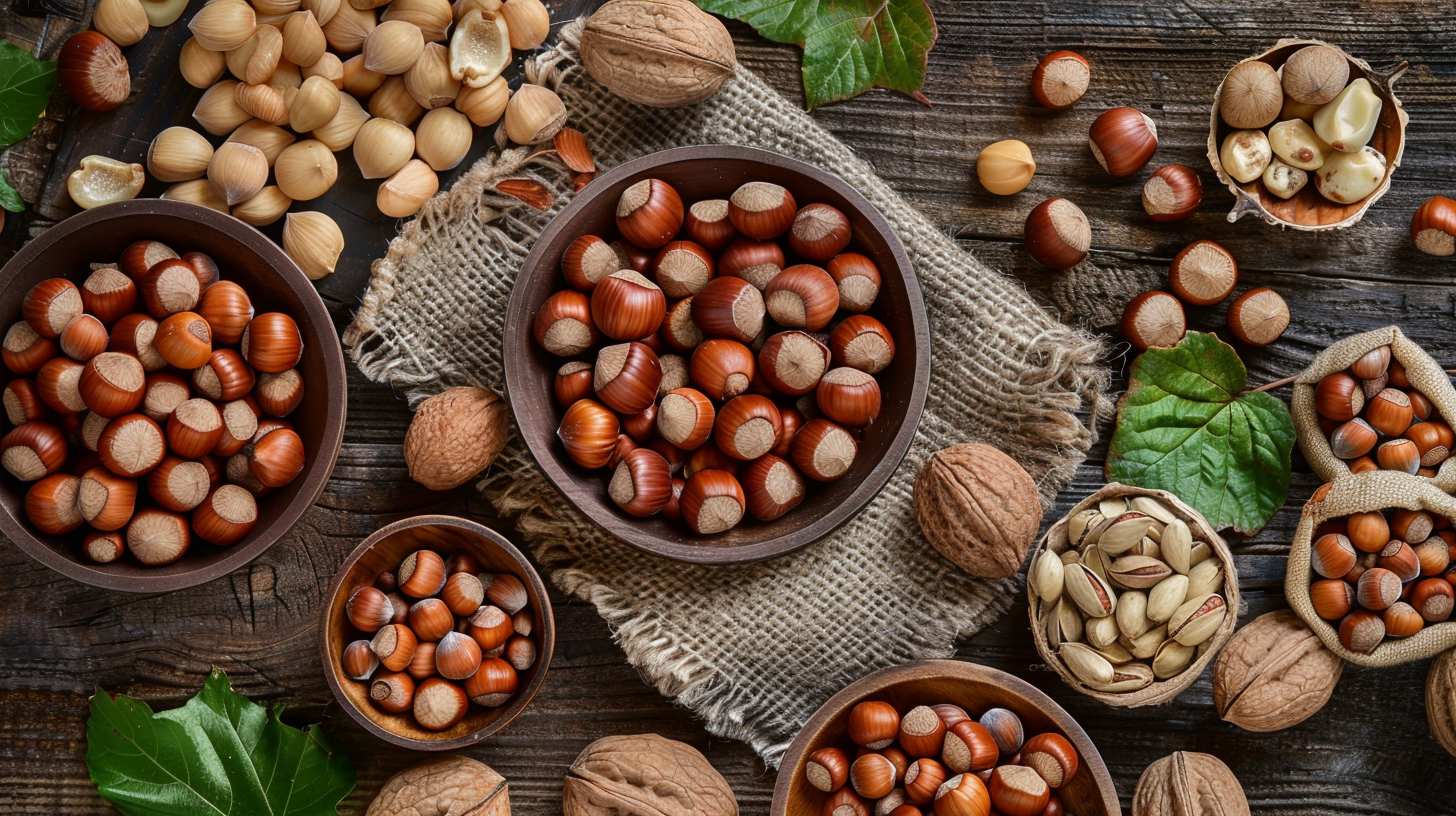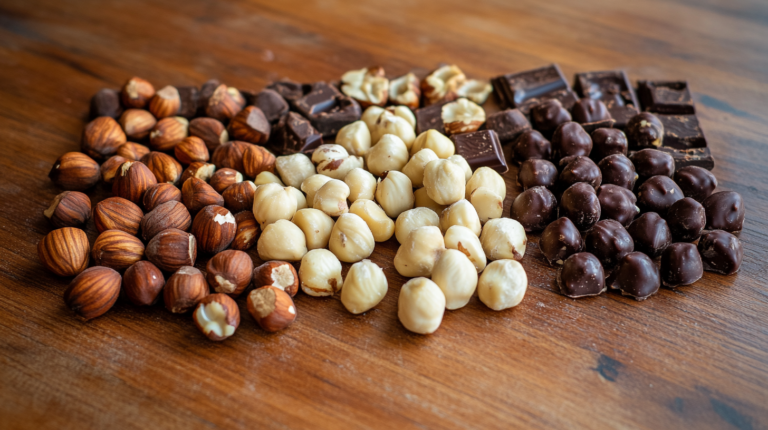Discovering the Flavors of Hazelnut Varieties
Introduction
Hazelnuts (Corylus avellana) are celebrated for their distinctive flavors, making them a favored choice in various culinary and commercial applications. With a rich history and a significant place in agriculture, hazelnuts offer a diverse range of flavor profiles influenced by genetic variety, growing conditions, and processing methods. This article explores the unique flavors of different hazelnut types, providing valuable insights for growers, enthusiasts, and consumers alike.
The Science of Hazelnut Flavors

The flavor of hazelnuts is a complex interplay of various chemical compounds, including sugars, organic acids, and volatile compounds. These elements are influenced by factors such as soil composition, climate, and cultivation practices. For instance, hazelnuts grown in volcanic soils tend to have a richer, more intense flavor. Post-harvest processing, including drying and roasting, further develops and enhances these flavors, contributing to the final taste profile (Alasalvar & Shahidi, 2008).
Major Hazelnut Varieties and Their Flavor Profiles
European Hazelnut (Corylus avellana) European hazelnuts are among the most widely cultivated varieties, known for their robust and versatile flavors. Popular cultivars include:
- Barcelona: This variety has a rich, nutty flavor with a slightly sweet undertone. It is often used in confectionery and baking due to its balanced taste and good shelf life (Arslan et al., 2020).
- Tonda Gentile: Prized for its sweet taste and fine texture, Tonda Gentile is a preferred choice for high-quality chocolate products and desserts (Caligiani et al., 2016).
American Hazelnut (Corylus americana) Native to North America, the American hazelnut offers a different flavor profile compared to its European counterpart:
- American Hazelnut: This variety is known for its slightly bitter taste and earthy undertones. While not as commonly used in commercial products, it is valued for its unique flavor and high oil content, which is beneficial for certain culinary applications (Mehlenbacher, 1991).
Turkish Hazelnut (Corylus colurna) Turkey is a leading producer of hazelnuts, with several varieties that are highly esteemed for their flavor:
- Cakildak: Characterized by a complex flavor profile with a high content of volatile compounds, Cakildak is often described as having a more intense and slightly astringent taste (Ozdemir et al., 2001).
- Palaz: Known for its balanced flavor, Palaz offers a moderate amount of volatile compounds, resulting in a well-rounded and pleasing taste (Yildiz et al., 2013).
- Tombul: This variety is appreciated for its sweet and nutty flavor, making it a popular choice for both raw consumption and processed products (Koksal et al., 2006).
Comparative Analysis of Hazelnut Flavors
Sensory evaluation is a critical method for comparing the flavor profiles of different hazelnut types. Common descriptors include nutty, sweet, earthy, and astringent. A comparative analysis of hazelnut varieties reveals the following flavor characteristics:
- Barcelona: Nutty, sweet, with a rich aftertaste.
- Tonda Gentile: Sweet, with a fine, delicate texture.
- American Hazelnut: Earthy, slightly bitter.
- Cakildak: Intense, slightly astringent.
- Palaz: Balanced, well-rounded.
- Tombul: Sweet, nutty.
This analysis helps in understanding consumer preferences and guides growers in selecting varieties that meet market demands (Cristofori et al., 2008).
Applications of Different Hazelnut Flavors in Culinary Arts and Industry
Hazelnuts’ diverse flavor profiles make them suitable for a wide range of culinary applications. In confectionery, European varieties like Tonda Gentile and Barcelona are favored for their sweetness and fine texture, enhancing chocolates and pastries. Turkish varieties such as Palaz and Tombul are ideal for nut butter and spreads due to their balanced and nutty flavors. Additionally, the unique taste of American hazelnuts can be utilized in savory dishes and specialty oils, adding a distinct earthy note (Ozdemir et al., 2001).
Future Trends in Hazelnut Cultivation and Flavor Research
Advances in hazelnut breeding focus on enhancing flavor profiles, increasing disease resistance, and improving yield. Researchers are exploring the potential for new cultivars that offer unique flavors and better adaptability to diverse growing conditions. Additionally, ongoing studies aim to optimize post-harvest processing techniques to preserve and enhance the desirable flavor attributes of hazelnuts (Boccacci et al., 2013).
Conclusion
Understanding the flavor profiles of different hazelnut types is crucial for growers, enthusiasts, and consumers. European, American, and Turkish hazelnuts each offer unique taste experiences, influenced by their genetic makeup and cultivation practices. As research and breeding efforts continue to advance, the future holds exciting possibilities for new hazelnut varieties with enhanced flavors and improved qualities. This diversity not only enriches culinary applications but also benefits the agricultural and commercial sectors by meeting varied consumer preferences.
References
- Alasalvar, C., & Shahidi, F. (2008). Compositional characteristics and health effects of hazelnut (Corylus avellana L.): An overview. Journal of Agricultural and Food Chemistry, 56(11), 4599-4605.
- Arslan, M., Cakmak, Y. S., & Ozkaya, M. T. (2020). Volatile and non-volatile flavor components of some Turkish hazelnut varieties. Food Chemistry, 321, 126655.
- Boccacci, P., Botta, R., & Rovira, M. (2013). Genetic diversity and structure in hazelnut (Corylus avellana L.) cultivars assessed by microsatellite markers. Plant Breeding, 132(6), 660-667.
- Caligiani, A., Marseglia, A., & Palla, G. (2016). Characterization of hazelnut (Corylus avellana L.) cultivars by chemical and chemometric tools. Food Research International, 89(1), 72-78.
- Cristofori, V., Ferramondo, S., Bertazza, G., & Bignami, C. (2008). Nut and kernel traits and chemical composition of hazelnut (Corylus avellana L.) cultivars. Journal of Food Quality, 31(5), 609-622.
- Koksal, A. I., Artik, N., & Simsek, A. (2006). Characterization of Turkish hazelnut varieties: Oil composition. Journal of the American Oil Chemists’ Society, 83(4), 299-303.
- Mehlenbacher, S. A. (1991). Hazelnuts (Corylus). In Genetic Resources of Temperate Fruit and Nut Crops (Vol. 290, pp. 789-836). ISHS.
- Ozdemir, F., Açkurt, F., & Yildiz, M. (2001). Evaluation of the nutrition and food quality of Turkish hazelnut varieties: Mineral composition. Food Chemistry, 73(4), 411-415.
- Yildiz, G., Wehling, R. L., & Ciftci, O. N. (2013). Formation of phytosterol oxidation products in hazelnuts and their oils. Food Chemistry, 141(2), 1241-1247.






